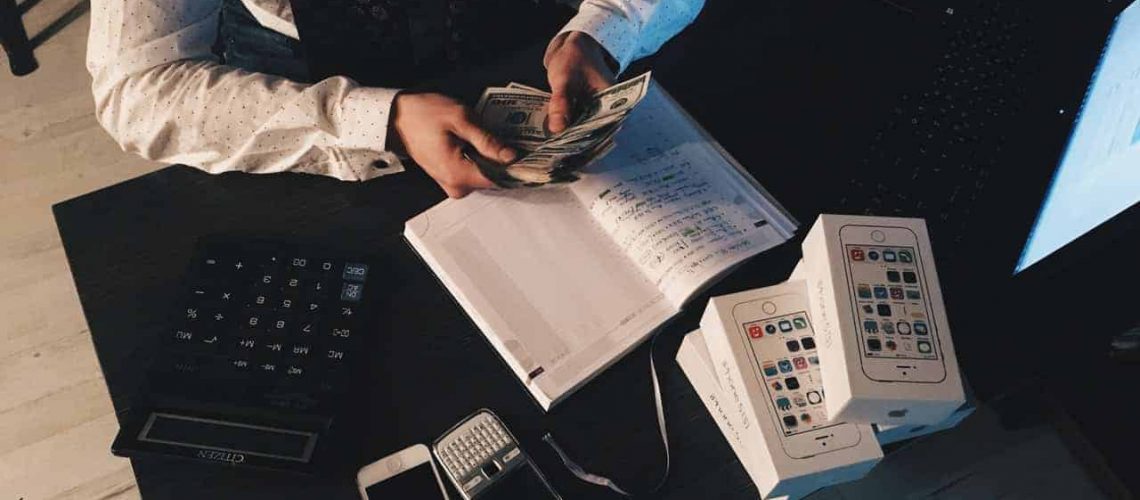Up until this point, my advice for entrepreneurs has been valid for pretty much everyone. The idea of creating a circle around your life so that you don’t over-expand your lifestyle is universal. Tithing has been foundational for me. Getting out of debt and restructuring your spending habits is something everyone can benefit from. That’s why I’m calling this series Financial Rehab. We don’t start with a perfect house, we have to tear out the old and replace it with something better.
Today is where I want to focus on the entrepreneur. As an entrepreneur, your income will fluctuate. Depending on what stage of your business this could fluctuate wildly from one month to the next. This is why the financial blueprint is so important upfront.
Virtual Envelope System
The envelope system is a popular budgeting method. The theory is that if you cash your check and then put that cash into envelopes then you’ll only spend what’s in the envelope. You only need to google “envelope system” to see how hard it is to manage this system. Although having cash lying around in envelopes is a cumbersome thought, the real danger is that it’s pretty easy to cheat the system. When your “eating out” envelope is empty, why not steal from that other envelope? To make matters worse, for entrepreneurs, this system could very well send you into a deadly debt spiral.
Having cash in envelopes didn’t make any sense to me from the beginning. That might have been a great idea for my parents, but not for me. Instead, I decided to create virtual envelopes. Instead of a monthly amount that goes into each envelope and would be spent and refilled each month, I set up “virtual” rules as well. Between accounts and conditional rules to follow our family was able to bring stability to an unstable financial environment.
An Account For Everything
First, let’s think about what accounts we’ll need to set up. Practically this would only make sense if your bank allows for free checking, free savings and free business accounts. For our purposes today we’ll focus on the personal accounts. In addition, it’s a bit cumbersome to try to do this with your business. While it might sound like a lot, imagine how cumbersome trying to do all these things with envelopes would be. In addition, if you’re doing payroll or receiving electronic payments you can easily transfer money or have direct deposit to these accounts.
Possible Account Type
- Tithe
- Giving
- Taxes
- Business
- Living / Personal Expense
- Dream or Vacation
- Savings
The Rules
Each account has rules associated with it. This isn’t a complex thing like a brand new board game or we’d get lost in it all. The rules are simple. For example, the tithing account, we take 10% of the increase and transfer the money in there. The most complex one is your living expense account. We’ll cover that below.
Taxes
10% Of Income
I really wanted to call this section the “Jobsite Thieves” but I’ll just get to the point. Taxes are always going to account for 20% to 35% or more of your budget. Until there’s an adoption of a Fair Tax or you give away enough to offset this you should always stock 20% to 35% in a separate account. This money will be used once a year to pay taxes, you could put it in a money market but you’ll need it to be liquid. There are many things you could do which vary with risk, I’ll let you decide how you want to do this but ultimately you’ll need this money every spring to pay that bill. You also need to know that if all goes well this number will increase and if all doesn’t go well it will likely increase.
Living Expense
While most of your “accounts” will have a fixed percentage attached to them. There are a few areas that require conditional rules. For example, you should have an account you operate out of. In our family, we call this an expense account. If you don’t have 1 month of your expenses saved up, then you should do this as soon as possible. This is your emergency fund. From there you can “fill” your account at a rate of 20% of your income or more in order to build this account up to approximately 6 – 12 months of your income or expenses. I am purposefully ambiguous here because everyone has different risk tolerance. For me, I’d feel very secure with 3 months of income. My wife, on the other hand, would rather have 12 months of expenses. For her, expenses are what needs to be paid and 12 months of that can carry the family for a whole year while we move to plan “b.”.
- If less than 1 Month of Expenses then the max percentage
- Else if less than 6 to 12 months of expenses fill at 20% or more
- Once full, take this percentage and apply it to Giving, Savings, Debt Paydown Acceleration or Leisure.
Giving
Set up a separate account for tithing and/or general giving. Ever hear those stories about people who give money freely? It’s my belief that those people don’t have “extra” money, but rather that they intentionally set aside money to give away. You could put this in together with the tithe. For us, it’s easier to separate this from tithe. This gives us the freedom to designate funds for projects or other things. One year we were able to give very generously to a building fund at church and more recently we set aside the money for a trip to Cambodia. Because this account is being funded we are able to help a family when in need or help others when the need arises without feeling the stress.
Finally, having this account also gives you the power to say no. This is huge. When you say yes to something you are saying no to something else. For us, saying no to someone’s need or trip or chocolate bar fundraiser was difficult. Now we can say, “if there’s money in our giving account, then it’s a maybe if there’s no money, it’s a no.”
Leisure
I had a brief stint as a financial planner. What I noticed when I was helping families is that very few people budgeted for leisure. However, the problem that most of the families I helped in suburban America was their leisure activities. That $1,500 vacation wasn’t in the budget and was added “on top” via a credit card.
Leisure is important. Instead of simply adding it as debt or letting it deplete an account. Start with a plan. Answer these questions…
- How many vacations do you want to go on and where? (in general)
- What’s your Christmas budget?
- Is this the year to upgrade my phone, computer, tv, etc.?
You can use the Financial Blueprint Worksheet to figure out how much you need to save each month to pay for the experience. In addition, you can see what percentage this is of your income.
Keep in mind, leisure is a bonus. If your main account is not full that’s the priority. There will be months that this leisure account does not get any funds at all. On the other hand, once that main account is full you could put UP TO 5% in this account. With the rest going to…
Saving And Investing
Beau Henderson, author, speaker and national radio host of the RichLife Show ™ and The Retirement Resource is a local financial planner. He says that we should be saving 20% or more of our money for retirement. You are going to have to draw a line in the sand with your budget and peel off a percentage to save for the future.
Saving is not just a “wise” thing to do for you and your family it’s socially responsible. It’s a fact that you and I are more likely to get sick and need major medical attention. In fact, it’s said that 60% of all bankruptcies are due to medical bills and conditions.
Of that 20%, 100% should be in some diversified investments. We handled liquidity with your expense account. If you feel more comfortable with some money in a money market, the put a small percentage there as an “emergency-emergency fund.” However, the rest should be invested in different investment vehicles, which I’ll cover more in depth in another blog post.
Final Check
Most successful business owners have a budget for their business but not their personal life. What I think most “gurus” miss is that some businesses started with an operating account, leaving their personal accounts to catch up. The challenge then is that the income fluctuates and with no real plan for the worst-case scenario or the best-case scenario. The cash flow ride feels like a roller coaster and less like the rocket ship you intended when you started the business.
The solution is having a percentage based plan for what happens at the floor and having “triggers” that allow you to divert money to things you care about should you have a really successful month or a monster commission check.



